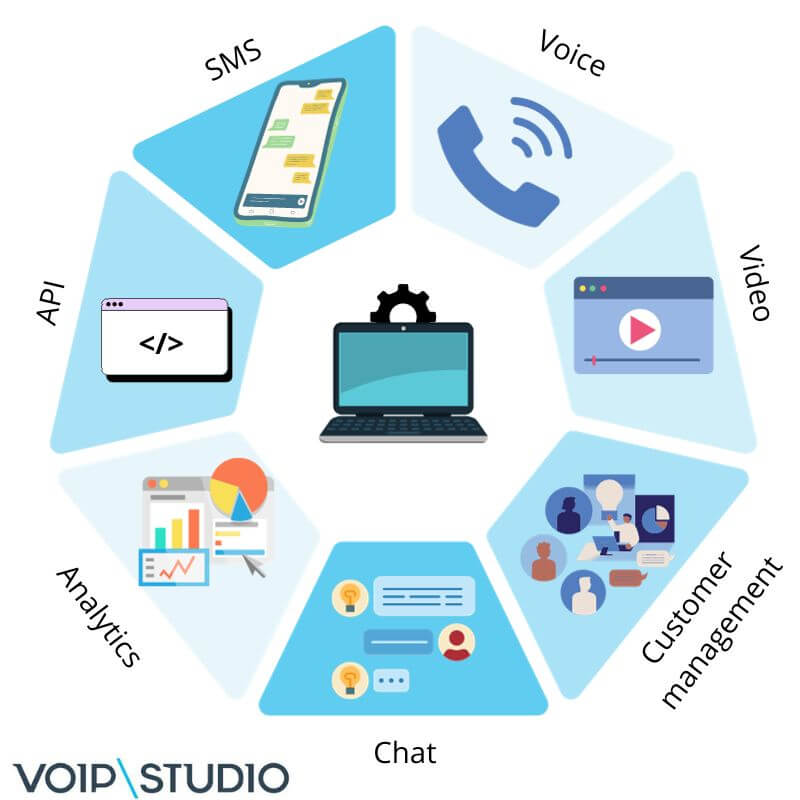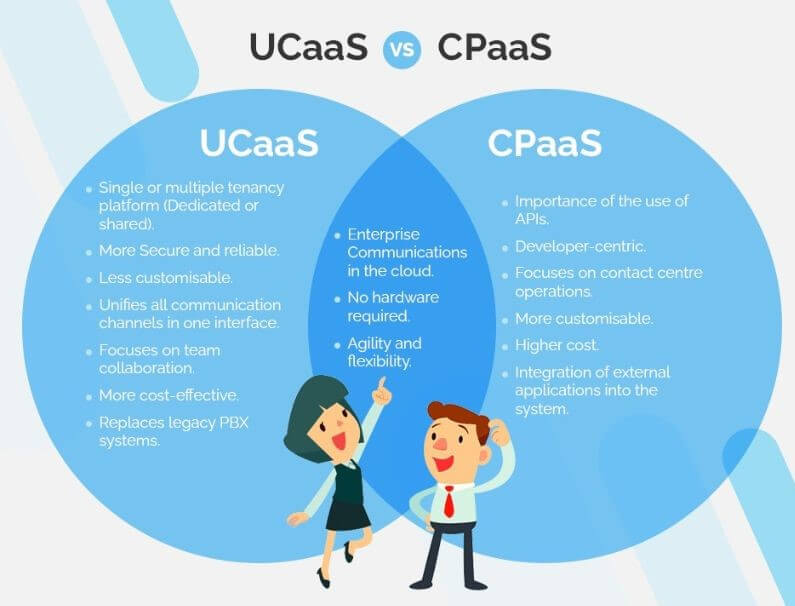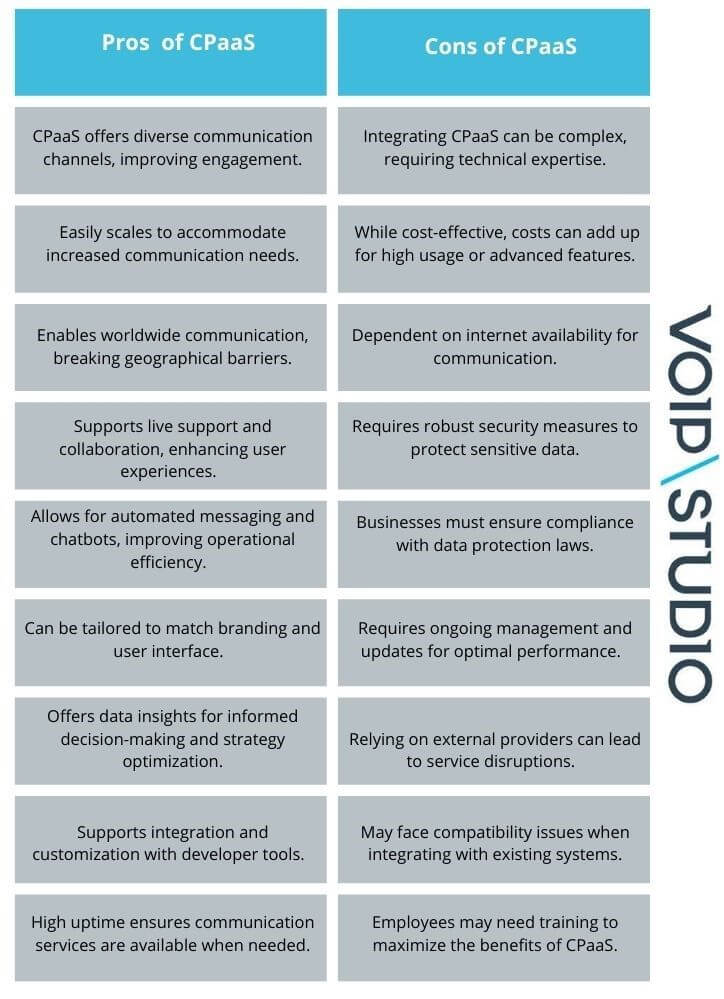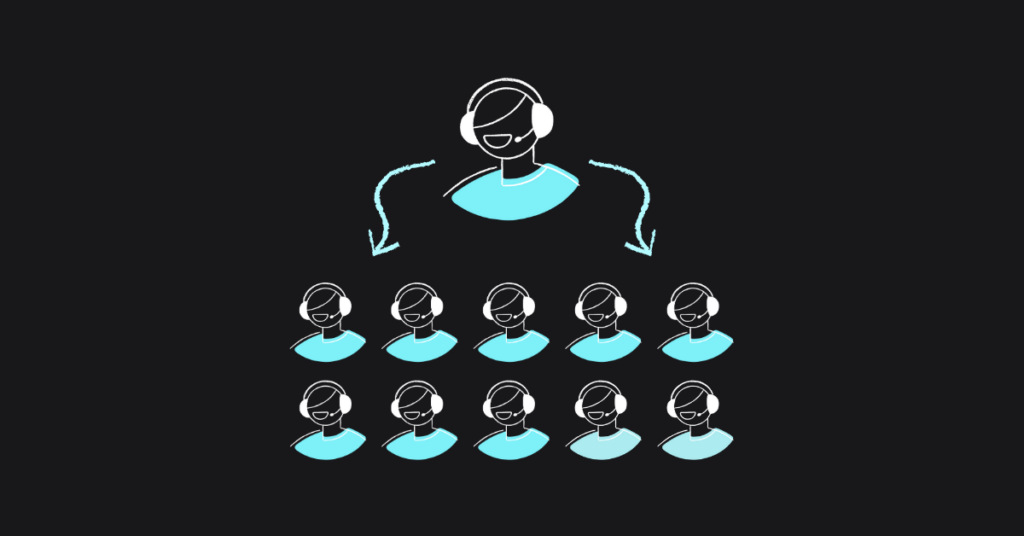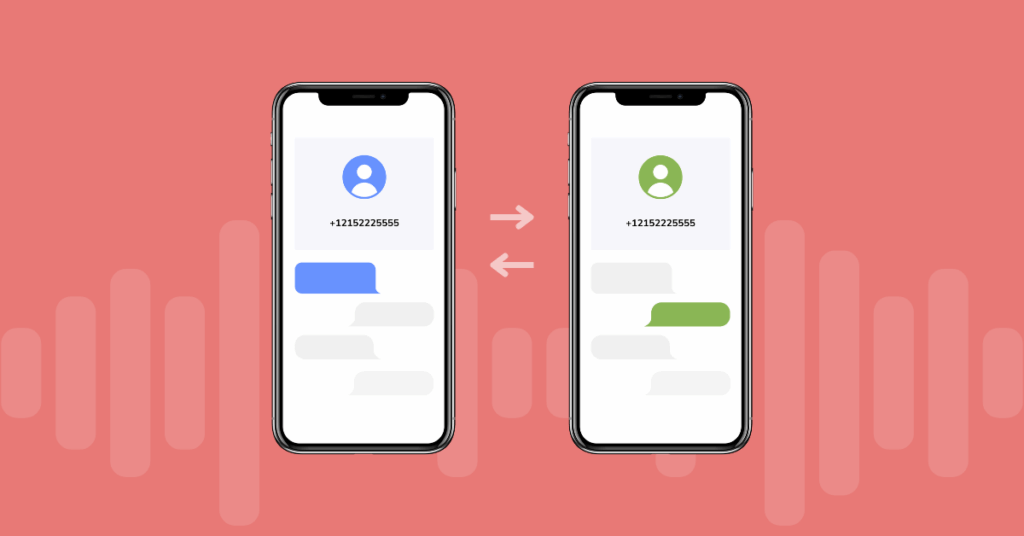Communication Platform as a Service (CPaaS): Complete guide for businesses
- Renier Schrenk

Table of contents
In an era defined by rapid digital transformation and interconnectedness, effective communication is paramount. Whether it’s engaging with customers, employees, or partners, the ability to connect seamlessly and efficiently is a critical component of success in today’s business landscape. Meet Communication Platform as a Service, or CPaaS, a powerful solution that facilitates communication by leveraging the capabilities of the digital age.
What is a CPaaS?
A Communication Platform as a Service, commonly referred to as CPaaS, is a cloud-based technology that provides a wide array of communication and collaboration tools as services. CPaaS solutions enable businesses to integrate real-time communication features into their applications, websites, and services, fostering seamless interactions between individuals and entities.
This versatile platform encompasses text messaging, voice and video calls, email, instant messaging, and more. CPaaS serves as a bridge between traditional communication methods and the digital age, allowing organizations to enhance customer engagement, automate processes, and optimize communication workflows. It empowers businesses to leverage the power of communication within their applications without the need to build these capabilities from scratch, making it a valuable tool in the modern tech landscape.
How does CPaaS work?
It harnesses programmable Communications APIs and SDKs (Software Development Kits) to integrate communication features into your applications seamlessly.
APIs, or Application Programming Interfaces, serve as programming tools that facilitate communication between your application and external software, acting as intermediaries or translators. In the context of CPaaS, these APIs include services like Voice APIs, empowering your developers to integrate them into your existing application thereby enabling features such as VoIP voice calls. This flexibility allows businesses to enhance their application’s communication capabilities by adding multiple APIs.
SDKs, on the other hand, are comprehensive toolkits that streamline application development. Analogously, SDKs are like a recipe for baking a cake from scratch, whereas APIs are akin to a store-bought cake mix that requires a few key ingredients. CPaaS solutions provide both SDKs and APIs, focusing on communication APIs.
This approach enables businesses to customize their applications, delivering improved user experiences and operational efficiency without resource-intensive development projects.
Key Features of CPaaS
Communication Platform as a Service offers a range of critical features that empower businesses to enhance their communication capabilities and drive digital transformation:
- Multichannel communication: CPaaS enables businesses to communicate through various channels, including SMS, MMS, voice calls, video calls, email, and chat, allowing them to engage with their audience through their preferred means.
- API integration: Integrating CPaaS APIs into applications, websites, and services allows seamless, real-time communication within these platforms.
- Two-way communication: CPaaS supports two-way communication, making it suitable for customer engagement and internal team collaboration. Users can send and receive messages, calls, and other communications.
- Automated messaging: Businesses can use CPaaS to automate messaging workflows, such as appointment reminders, notifications, and customer support chatbots, streamlining operations and enhancing customer experiences.
- Global reach: Many CPaaS providers offer worldwide coverage, enabling businesses to communicate with customers or teams across the globe, transcending geographical boundaries.
- Scalability: CPaaS solutions can scale to accommodate increased communication needs, making them suitable for both small startups and large enterprises.
- Security: CPaaS platforms often incorporate robust security measures to protect sensitive communication data. They may also adhere to industry-specific compliance regulations, ensuring data privacy and legal compliance.
- Real-time communication: It facilitates real-time interactions, making it ideal for live support, conferencing, and collaborative applications.
- Cost-efficiency: By eliminating the need to build and maintain a communication infrastructure, CPaaS can be cost-effective, as businesses only pay for the services they use.
These features make CPaaS a versatile and valuable tool for businesses looking to stay competitive in the digital age by improving customer engagement, enhancing operational efficiency, and expanding their communication capabilities.
Difference between CPaaS and UCaaS
Unified Communications as a Service (UCaaS) and Communication Platform as a Service (CPaaS) are two distinct but interrelated categories of communication solutions.
UCaaS is a comprehensive communication and collaboration solution designed to streamline and unify various communication channels and tools within an organization. UCaaS providers offer features that typically include voice calling, video conferencing, team messaging, email, file sharing, and integrated contact centers.
The primary goal of UCaaS is to enhance internal and external communication, boost team collaboration, and provide a seamless, user-friendly communication experience. It is often used by businesses of all sizes and industries to create a centralized platform for employees to communicate efficiently, share information, and conduct virtual meetings.
CPaaS and UCaaS serve different purposes within the realm of communication solutions. UCaaS is centered on delivering a comprehensive, user-friendly platform for businesses to enhance internal and external communication.
At the same time, CPaaS provides the tools and APIs to create customized communication features within their applications. The choice between the two depends on the specific communication needs, customization requirements, and target audience of the organization.
CPaaS Pros and Cons
CPaaS use cases and examples
CPaaS plays a pivotal role in several prominent industries by revolutionizing communication and collaboration. Here are detailed examples of its applications:
Real-time customer support
Businesses can leverage CPaaS to provide real-time customer support through various channels, such as SMS, chat, and voice calls.
Example: A logistics and transportation company uses CPaaS to enable customers to initiate chat conversations for immediate assistance regarding shipment tracking and delivery inquiries.
Automated appointment reminders
CPaaS can automate appointment reminders through SMS or voice calls, reducing no-shows and improving scheduling efficiency.
Example: A retail company employs CPaaS to send automated appointment reminders to customers who have booked personalized shopping sessions, reducing the number of missed appointments and enhancing the shopping experience.
Two-factor authentication (2FA)
Businesses enhance security with CPaaS by implementing 2FA, where users receive SMS codes to verify their identity during login or transaction processes.
Example: A financial institution uses CPaaS to send one-time PIN codes via SMS to customers for secure online banking transactions.
Notification services
CPaaS facilitates mass notifications to inform customers or employees about essential updates, emergencies, or promotions.
Example: An airline uses CPaaS to send SMS notifications to passengers regarding flight delays, gate changes, or promotional offers.
Interactive Voice Response (IVR)
CPaaS enables the creation of IVR systems for automated call routing and customer service.
Example: A call center uses CPaaS to set up an IVR system, allowing callers to select options for different services or departments.
Appointment scheduling and booking
Businesses use CPaaS to allow customers to schedule appointments or book services through messaging or voice interactions.
Example: A call center in the retail sector utilizes CPaaS to enable customers to schedule appointments for personalized shopping sessions, enhancing the customer experience.
Surveys and feedback collection
CPaaS facilitates the distribution of surveys and feedback collection via SMS, chat, or voice interactions.
Example: A finance company employs CPaaS to send SMS surveys to customers, collecting feedback on their recent interactions with the customer support team and overall satisfaction.
In-App messaging and chat
Mobile apps integrate CPaaS for in-app messaging and chat features to enhance user engagement.
Example: A financial mobile app uses CPaaS to enable users to engage in secure in-app chat conversations with financial advisors for investment-related inquiries and guidance.
How to choose a CPaaS provider?
Here’s a step-by-step guide on how to choose a CPaaS provider.
- Step 1. Define your communication needs: begin by clearly defining your communication requirements. Identify the channels you need (SMS, voice, video, chat), the geographic regions you operate in, and the specific use cases for your CPaaS solution.
- Step 2. Research CPaaS providers: conduct thorough research to identify CPaaS providers in the market. Explore online reviews, industry reports, and customer feedback to create a shortlist of potential providers.
- Step 3. Evaluate scalability: assess the scalability of each provider. Ensure they can accommodate your business growth without compromising service quality. Consider your future needs when making this assessment.
- Step 4. Check supported channels: verify which communication channels each CPaaS provider offers. Ensure they align with your specific needs and the preferences of your target audience.
- Step 5. Confirm global reach: if your business operates internationally, confirm that the CPaaS provider has a global reach and offers reliable coverage in the regions you serve.
- Step 6. Assess reliability and uptime: investigate the provider’s track record for uptime and service reliability. Downtime can disrupt your operations and negatively impact customer interactions.
- Step 7. Review security and compliance: ensure the CPaaS provider has robust security measures in place, including data encryption and compliance with relevant regulations in your industry.
- Step 8. Explore developer-friendly tools: if you plan to customize or integrate CPaaS services, choose a provider with developer-friendly tools and comprehensive documentation to support your development team.
- Step 9. Assess customer support: evaluate the responsiveness and knowledge of the CPaaS provider’s customer support team. Check their support options, response times, and availability.
- Step 10. Consider integration capabilities: assess how well the CPaaS platform can integrate with your existing systems, such as CRM or ERP software. Compatibility is crucial for a seamless workflow.
- Step 11. Request analytics and reporting: look for providers that offer analytics and reporting tools. These tools can provide valuable insights into your communication strategies and help with data-driven decision-making.
- Step 12. Explore customization and flexibility: choose a provider that allows you to customize communication workflows and adapt to your specific business needs. Flexibility is vital to meeting your unique requirements.
- Step 13. Evaluate user experience: consider the user-friendliness of the CPaaS platform, both for your team members who manage it and for end-users who interact with your services.
Following these steps, you can make a well-informed decision when choosing a CPaaS provider that aligns with your communication needs and business goals.
FAQs
Can I integrate CPaaS into my existing business systems?
Yes, CPaaS is designed to integrate with your existing systems, such as CRM, ERP, and other software. This integration allows for a seamless workflow and enhances the efficiency of your operations.
What level of developer expertise is required to implement CPaaS solutions?
The level of developer expertise required varies based on the complexity of your integration. Most CPaaS providers offer developer-friendly tools and extensive documentation to assist your development team. However, some basic technical knowledge is beneficial.
How can CPaaS improve customer service for my business?
CPaaS allows businesses to provide quick and personalized customer support through various channels, enhancing the overall customer experience. Customers can connect via their preferred communication methods, such as SMS, chat, or voice calls, improving satisfaction and loyalty.
Is CPaaS suitable for my industry or business size?
CPaaS is versatile and can be adapted to various industries and business sizes. Many kinds of businesses and sectors use it. Its scalability makes it suitable for both small businesses and large enterprises.
What are the security measures in place to protect customer data and communication?
CPaaS providers prioritize data security. They employ encryption, compliance with industry regulations, and best practices to safeguard customer data and communication. Be sure to choose a provider with a strong security track record.
How can CPaaS help with global expansion and international communication?
CPaaS providers with global reach can support your international expansion. They offer communication services in multiple regions and languages, ensuring you can effectively connect with a worldwide customer base.
Conclusion
In the ever-evolving business communication landscape, Communication Platform as a Service emerges as a dynamic solution that seamlessly integrates the digital age with traditional communication methods.
With its versatile communication tools and APIs, CPaaS empowers businesses to excel in customer engagement, streamline operations, and optimize communication workflows. As a pivotal asset in today’s competitive market, CPaaS offers the agility and customization needed to enhance communication strategies, connect with diverse audiences, and drive success in the digital era.
More from the blog
Want to improve your business communication?
Unlock enterprise-class call center power at affordable prices – no hardware, no delays, no surprises!
